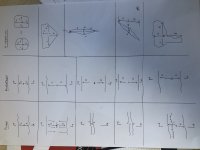CJ said:
I've just been messing around with some scans and I see the issues with deciding where to slice for the purposes of a 2D survey. How is this issue solved for traditional surveying methods? Am I aiming to convey the "floor" of a passage, or to provide a general gist of the passage? Or showing the tightest constriction? e.g. an unusual hourglass shaped passage: how would that look on a top down 2D survey? My first thought would be to capture the dimensions of the ground and then provide a cross-sectional view for that part?
This is the crux of it! As noted in the other posts, there's (currently) a big difference between a 3d scan/survey/model and a functional map/survey that's useful for use by cavers or divers. It's down to the interpretation of the cartographer as to how to represent the cave, such that's it's accurate but also conveys the detail of the passage to make it most useful.
For walking & crawling about, you can put loads of referenced cross-sections on (e.g. like the RRCPC Lancaster hole survey), which is great for completeness, but in practical terms most people just use the plan and the passage width/colour, combined with 'P5' / 'C3' / 'tight' symbols are the most useful.
Similarly, for vertical stuff, the compass direction is less important, hence the rigging type topo is really easy to follow and can be quite schematic without being a problem. A plan of Rowten or Simpsons is very difficult to follow for example.
For diving, you need depths. The elevation profile is essential for planning and the plan is also key for finding gaps/leads. Important to label actual sketched wall/ceiling and 'presumed' wall / ceiling. Also, the dive line in a submerged cave is often in a completely different place to where you would walk or rig through the same cave. It will often be nowhere near the 'floor', which may be a massive sloping mud bank. It's often tricky to estimate LRUD (left, right, up, down) when you can't see the walls, or the cave exists beyond where you can fit. You can often see an air surface but not actually get up to it (at least for us fat, back-mounted folks)
Some examples below. The interesting one is the diagonal rift *. The passage is actually really 'wide' but it would be wrong to represent it like that on the plan. It would 'feel' narrow but also high passing through it. You can also use floor and ceiling step symbols to deal with classic streamway shapes.




